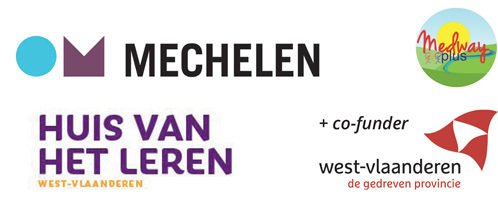When choosing your channels, you should take into account the different phases in a customer’s experience. This is known as the ‘customer lifecycle’.
At each phase of the customer lifecycle, your customers will use different channels to interact with you. Thinking about your customer’s lifecycle will help you identify what to include in the Channels box.
- Phase 1: Awareness
How do customers know what you offer?
- Phase 2: Evaluation
Helping customers understand your value proposition. At this stage, you want to make it clear what’s special about your business and why customers should choose you over your competitors.
- Phase 3: Purchase
How can you make it easy for customers to buy from you?
- Phase 4: Delivery
This is the stage where the customer receives what they’ve paid for. How do you fulfil the promise made to the customer in your value proposition?
- Phase 5: After sales
How do you support the customer after they’ve purchased from you? This means offering customers a way to contact you if they have a problem or question about what they purchased.
For each phase identified above, there will be channels that you can use to communicate and interact with the customer.
Lorsque vous sélectionnerez vos canaux, vous devez tenir compte des différentes phases de l'expérience consommateur. Ce processus est connu sous le nom de « cycle de vie de la relation client ».
À chaque étape du cycle de vie de la relation client, vos clients utiliseront différents canaux pour interagir avec vous. Réfléchir sur le cycle de vie du produit vous aidera à identifier quels canaux indiquer dans la case concernée.
- Phase 1 : Sensibilisation
Comment le client connaît-il votre offre ?
- Phase 2 : Évaluation
Aider les clients à comprendre votre proposition de valeur. À ce stade, vous voulez afficher clairement ce qui rend votre entreprise spéciale et pourquoi les clients doivent vous privilégier par rapport à vos concurrents.
- Phase 3 : Achat
Comment faciliter l'acte d'achat de votre client ?
- Phase 4 : Livraison
Il s'agit du stade où le client reçoit le produit ou service pour lequel il a payé. Comment honorez-vous la promesse faite au client dans votre proposition de valeur ?
- Phase 5 : Service après-vente
Comment aidez-vous votre client après son achat ? Il s'agit de proposer aux clients un moyen de vous contacter en cas de problèmes ou de questions sur ce qu'ils ont acheté.
Pour chaque phase identifiée ci-dessus, vous définirez des canaux que vous pouvez utiliser pour communiquer et interagir avec le client.
Bij het kiezen van uw kanalen moet u rekening houden met de verschillende fasen in de ervaring van een klant. Dit staat bekend als de ‘klantlevenscyclus’.
In elke fase van de klantlevenscyclus gebruiken uw klanten verschillende kanalen om met u te communiceren. Als u nadenkt over de levenscyclus van uw klant, kunt u bepalen wat u in het vak kanalen moet opnemen.
- Fase 1: Bewustzijn
Hoe weten klanten wat u verkoopt?
- Fase 2: Evaluatie
Zorg ervoor dat klanten uw waardepropositie begrijpen. In deze fase wilt u duidelijk maken wat er bijzonder is aan uw bedrijf en waarom klanten u moeten verkiezen boven uw concurrenten.
- Fase 3: Aankoop
Hoe kunt u het voor klanten gemakkelijk maken om bij u te kopen?
- Fase 4: Levering
Dit is de fase waarin de klant krijgt waarvoor hij heeft betaald. Hoe komt u de belofte na die u aan de klant heeft gedaan in uw waardepropositie?
- Fase 5: Na de verkoop
Hoe ondersteunt u de klant na de verkoop? U moet klanten een manier bieden om contact met u op te nemen als ze een probleem of vraag hebben over wat ze hebben gekocht.
Voor elke fase zijn er kanalen die u kunt gebruiken om met de klant te communiceren.
When choosing your channels, you should take into account the different phases in a customer’s experience. This is known as the ‘customer lifecycle’.
At each phase of the customer lifecycle, your customers will use different channels to interact with you. Thinking about your customer’s lifecycle will help you identify what to include in the Channels box.
- Phase 1: Awareness
How do customers know what you offer?
- Phase 2: Evaluation
Helping customers understand your value proposition. At this stage, you want to make it clear what’s special about your business and why customers should choose you over your competitors.
- Phase 3: Purchase
How can you make it easy for customers to buy from you?
- Phase 4: Delivery
This is the stage where the customer receives what they’ve paid for. How do you fulfil the promise made to the customer in your value proposition?
- Phase 5: After sales
How do you support the customer after they’ve purchased from you? This means offering customers a way to contact you if they have a problem or question about what they purchased.
For each phase identified above, there will be channels that you can use to communicate and interact with the customer.


